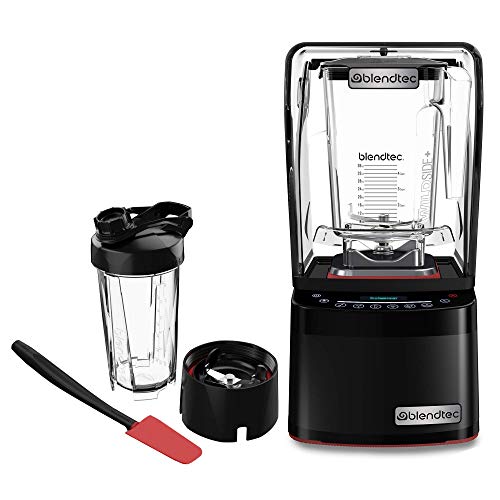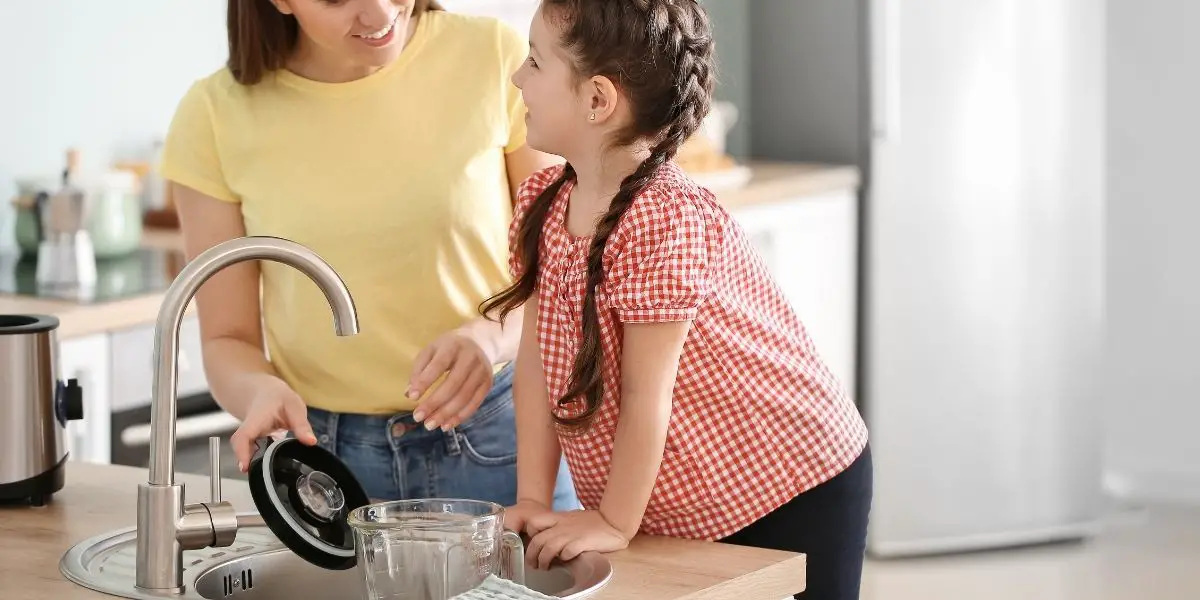Blenders can be loud for various reasons, ranging from improper placement to type of materials used, amongst others. You can reduce or muffle the sound of this by using a variety of techniques and methods. Some ways include using towels for muffling, using sound enclosure boxes to muffle the sound, and other techniques.
If you are like me, you would have been fed up with the loud noise your blender produces. I don’t know about you, but something about this noise irks me, and I will do anything to stop it.
I know people who threw away their blenders to get new ones or spend hundreds of dollars at the technicians trying to repair them.
It turns out there are simple things you can do to drastically reduce noise from a blender without costing you thousands or hundreds of dollars. They range from using a towel to using a sound enclosure.
Following these steps will make sure you enjoy a stress-free blending experience this holiday period and for other periods.
I have researched extensively and tried out techniques of reducing sound of any blender at all, and I have compiled that knowledge, hoping that it will help you out with your problem.
So strap on your seatbelts, and let’s go on a ride to get you a less noisy blender.

How Many Decibels Is A Blender?
The sound of a blender varies according to the type of blender and what you are blending. With that said, the noise your blender will make is highly relative.
The sound in decibels produced by me and you talking will range from 67 to 71 dB, so any blender that also has noise at that rate can be said to be quiet. A very loud blender produces noise ranging from 85 dB upwards.
What Sound Does A Blender Make?
Blenders produce sounds while blending. It is inevitable for a blender to make some noise due to the force required to break any substance down. But this doesn’t mean your eardrums should get blown out because you want to have a smoothie.
You should be able to tell which sound is typical and which indicates a problem. So how do you differentiate between the normal sounds a blender makes an unhealthy, unpleasant sound.
Generally, a blender makes three types of noise: A normal loud sound, a low growl, and a high-pitched whine.
- The loud sound is typically caused by the amount of HorsePower (HP) your blender has. The higher the HP, the louder the blender. So you should consider the horsepower of the blender you get. Bear in mind that blenders with lower HP don’t have the capacity to blend hard substances, e.g., Ice, Coconut, etc. The lower your blender HP, the lesser strength it has.
- The low growl is caused when your cooling system is not working hard enough to meet the engine’s demands. The machine is working hard, but the fan is not keeping up. This might cause the blender to make a “low growl” sound but the only time you should worry about this sound is if it continues for a long time as it eventually evens out. The trick here is to blend in small intervals instead of leaving your blender running for an extended period at a time. This technique will prevent overheating of your blender’s engine. I usually do this when I blend something very thick and can be a convenient way to cool down the engine.
- The blender’s fan produces the high-pitched whine, and it is the inverse of the low growl. It is caused by the fan overperforming the engine and is no cause for alarm.
Why Are Blenders So Loud?
Blenders can get loud and noisy for a variety of reasons. Say, you have been using a blender, and suddenly it starts getting noisy, then you can put that down as old age and may be due to some parts getting weaker.
But that’s not the only reason that blenders get loud, and not all blenders start off straight from the pack as quiet blenders.
1. Cheap Parts: A blender made with cheap parts or cheaply made can produce a lot of noise as the blender’s features get worn down or come off. This is why you should invest in a high-quality blender. You don’t have to break the bank when getting a blender but decide to make a worthy investment. It will save you repair costs over time.
2. Materials being blended: Let’s face it, blenders are just machines that smash food materials together at high speed and at a high frequency to produce a softer, more liquid version of the material. Of course, doing this will produce noise, so the noise being produced may depend on the particular material you are blending.
If you are blending iced fruits or anything iced, it will be a lot noisier than other softer things. The magnitude of force required to crush hard materials produces the increase in the sound you may observe.
3. Type of motor: The type of engine your blender runs on can also be the difference between noisy and non-noisy. There are two types of motors used in a blender;
- A brushed motor
- A brushless motor
Brushed motors are used in many blenders as they are cheaper to produce while being relatively powerful. This commutator’s switching action makes the magnetic field change quickly, which creates a lot of noise irrespective of whatever you are blending.
This is not the case with brushless motors, which are generally quiet. You should know that Most loud household appliances also use brushed motors.
4. Worn-out parts: If parts of your blender are worn out, then that’s a recipe for many unpleasant noises. Pieces that generally get worn out are the;
- Base
- Blades
- Motor Bearings
- Couplings
Relates Read: How Loud Is A Blender?
Why You Should Make Your Blender Quieter
There are a lot of reasons to make your blender quiet.
Peace and Quiet
Many people want to muffle the sound of their blender for their peace of mind, nothing more. Having a kitchen appliance that growls in your face every time you want to make a smoothie is something no one enjoys.
Not to mention having to scream if you want to have a conversation with a loved one while blending. Muffling the sound of your blender will give you quiet and much-needed respite from the noise, making your experience more effortless.
Malfunction
Often, a very noisy blender or a blender that just started producing excess noise might be suffering from a malfunction or lose parts.
So following the troubleshooting guide linked above, you can try to repair or replace the part. If your efforts fail, consider sending them to an auto repair shop or requesting a new one if your blender has a valid warranty.
Sparing Your Neighbors
How would you like it if, after a long and stressful day, you get home to sleep and your neighbor’s blender starts sounding like a car being crushed? Often, the noise from your blender not only inconveniences you, but it may also cause your neighbors and family members great discomfort.
So, if you are looking for a way to reduce the dark looks your neighbors throw at you, muffling the sound from your blender might be a great place to start.
How To Make Your Blender Quieter?
1. Using Thick Towels
If the noise is caused by your grinder banging on the table or desk, then using a towel will work admirably to reduce the blender noise. Just place a soft but thick towel between your blender and the table, and this will reduce the banging and vibrations, causing the sound. Please, make sure that this towel is positioned correctly and doesn’t make your blender fall over.
Also, make sure to wipe and wash and clean the towel after every use, though, as particles may remain there and turn it into a breeding ground for germs.
2. Sound Enclosure Boxes
Towels only work when the blender noise is produced by banging against a hard surface. What then happens if the noise comes from the engine or the blades? What do you do? Then the solution is rather simple. You use a sound enclosure box.
What is a sound enclosure box? You may ask. Sound enclosure boxes are rather complicated to explain their workings, but essentially, they keep the sound contained inside and do not allow it to escape. Generally, the denser the sound enclosure box is, the better.
The most effective type of sound enclosure is the Dome of silence. It has been proven to reduce noise by over a whopping 70% and is made from a transparent polymer that can deflect sound. This way, you still get a clear view of what you are blending, so you can stop at your desired consistency.
However, the Dome of silence is not meant for blenders that you have to hold down when blending with as the Dome completely envelopes the blender leaving you no place to hold.
If you are a technical person, you can build your own blender sound shield using plastic or wood and any other thick enough material, or you can just buy them online.
But consider the fact that with wood or any other material that lacks transparency, you will not be able to observe the blending
Here are 2 of the top sound enclosure boxes I will Recommend:
1. Blendtec Q Series sound enclosure
2. Blendtec sound enclosure QB2C
3. Downgrade Your Blender
As you may have learned by now, it’s the blades and engines of a blender that cause all the noise, so the more powerful a blender is, the more noise it produces. If you don’t need all that fast, powerful blending, you can downgrade and get a less powerful blender for your needs.
4. Moving Away From The Wall
This is an option if the noise is caused by your blender banging against the wall. You will have to move your blender away from the wall or any other rattling equipment to reduce the noise.
5. Using An Earmuff Or Headset
No, don’t laugh. Desperate times call for desperate measures. If your blender is an absolute noise machine, you can use an earbud to protect your ears against the noise.
Ear protection or muff reduces the noise for you, but this is at best a temporary solution as the noise will still be there and will grate the next person who is in the room with you.
6. Stopping The Blender When You’re Done
This is a method that I am guilty of not doing. Whenever I am done with my blender, I just turn it off without waiting for it to stop on its own. This, apparently, is wrong and one of the main contributors to noise pollution.
When you turn off your blender, it makes a sound as the blades come to a stop. This sound can be reduced by simply waiting for the blades to stop spinning on their own before turning off the blender.
7. Clean The Blender Properly
If you don’t clean your blender properly after every use, bits of food will remain in the crevices of the blender and will cause the motor to run more loudly as it has more food to process.
The loudness of a blender will also depend on the amount of dirt and grime that is in it which you have not cleaned. Clean the blender regularly with a toothbrush or a toothpick for best results, but if your blender isn’t dishwasher friendly, then just use a damp cloth.
8. Increase The Amount Of Liquid In Your Blender
If power isn’t an issue with you and you still want to reduce noise from your blender, this tip might be the one for you. Adding more liquid to your blend reduces the friction between the blades and whatever it is they are hitting thus reducing noise levels.
9. Avoid Using It At Full Load For Long Periods Of Time
The more you run your blender at full load and full speed, the louder it will get. Use your blender for short periods of time rather than letting it run continuously to avoid straining its motor.
10. Stay Within The Amps And Wattage Of Your Blender
This is a tip that very few people are aware of but could make all the difference if followed. When buying a blender, try to ensure that the wattage or amps of the model fits into that of your other appliances. You can check this online by looking up your other appliances’ information on their manufacturers’ websites.
You don’t want to overstretch your equipment’s capabilities as they will not last long if constantly put under beyond what they are capable of doing.
These are some of the solutions that you can use to reduce the noise coming from your blender.
Are There Quiet Blenders?
Of course, instead of going through all this stress trying to muffle the sound from your blender, you can just opt for a new “quiet” blender. Quiet blenders were built with noise in mind and do everything they can to reduce noise. To be clear, these “quiet” blenders aren’t 100% quiet but compared to their counterparts. They are relatively calm and stable.
Here is a list of the top 3 quietest blenders on the market –
1. Blendtec Pro 800
The Blendtec Pro 800 model operates on just 1800W of power/energy and has a sound enclosure with a top-notch airflow system. It runs on 3.8 hp, but this doesn’t make it less powerful. The Blendtec Pro 800 has enough power and can still give you a good blend in minutes. Click here to watch a video clip of it in action.
Related Read: Why Is Blendtec So Loud?
2. Vita-Mix Quiet One Blender
This is renowned for how quiet it is. Although on the pricey end of the spectrum, this blender has powerful features that account for its cost. With a 3 Horsepower motor and as little as 64 decibels, it is clear this blender has earned its place.
Related Post: Is Vitamix Loud?
3. Hamilton Beach Professional 1500W Quiet Shield Blender
This blender has the advantage of affordability over the Vita-mix Quiet one. Its motor has 2 Horsepower, and its noise decibel is 67. With this deal, you get a quiet blender for much less money.
List Of Some Commercial Blenders With Sound Cover
1. Blendtec Pro 800
The quietest sound enclosure blender in the market is the Blendtec Pro 800 model. which operates on just 1800W of power/energy and has a sound enclosure with a top-notch airflow system. It runs on 3.8 hp, but this doesn’t make it less powerful.
The Blendtec Pro 800 has enough power and can still give you a good blend in minutes. Click here to watch a clip of it in action.
Customers love the 800 for its stilt mode nature. Another reason why it is so quiet, apart from the previous reasons mentioned is that it doesn’t use blades to do its work.
It uses club-like appendages to pound your fruits, and whatever it is, you are blending into pulp. It is also effortless to clean.
2. Vitamix Quiet One
For a blender called the quiet one, the Vitamix Quiet one is sure, not entirely about its price. It is a very quiet blender that runs on just three hp of power and is used by many people for all sorts of things(REMOVE). It well justifies its price.
3. Waring Xtreme
This has a removable sound enclosure and has a jar big enough to contain most materials (64 oz.). It might be a little louder than others, but compared to regular blenders, then it is a tame blender.
How To Make Your Blender Quieter – Wrap Up
There are many ways to reduce sound of a blender and prevent it from getting on your nerves.
Some of these options might be as simple as using a towel to avoid vibration-induced noise, while some others will require you to buy or build a sound enclosure box or get a new “quiet” blender entirely.
It’s all left to you to choose a suitable option and use it.
However, before implementing this, make sure that the noise is not a symptom of an underlying problem or a malfunction and make sure you’re grinding stuff meant for the blender. Using a coffee blender to make something harder might cause you problems down the line.
You might also like –







